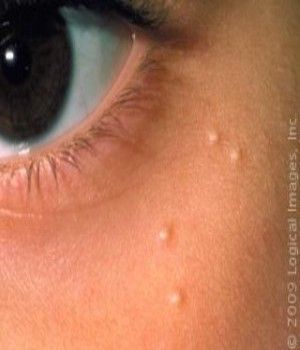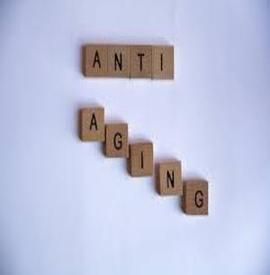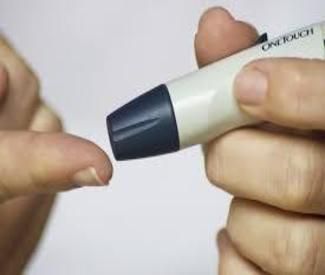Do you know what skin tags are? Skin tags are benign little growths, hanging out of the skin. They’re usually found in areas of the body where there’s more friction or rubbing going on.
So, if you notice a skin tag hanging out of your tummy area or maybe even in your groin area, don’t panic. Instead, learn more about them. Here are the 3 things you should know about skin tags.
The first thing you should know about skin tags is that they’re pretty common among adults.
“Skin tags are fairly common, they usually occur in the neck, armpit, under the breast, and groin area, sometimes on the eyelids. They’re little soft tags that sticks off on the skin,” Dr. Melissa Piliang, a dermatologist at the Cleveland Clinic, told TODAY.
They occur most often in people who are age 30 and older, and are more common in middle-aged adults. A kid or teen could have them, but that’s much more unlikely.
(Via: https://www.today.com/health/think-you-have-skin-tag-here-s-everything-you-need-t136184)
Skin tags are also known as acrochorda but of course, it’s a lot easier to call them skin tags.
Skin tags, medically known as acrochordons, are skin growths that stick out due to a short, narrow stalk.
(Via: https://www.today.com/health/think-you-have-skin-tag-here-s-everything-you-need-t136184)
While they’re considered to be tiny little growths or tumors, they’re really not as dangerous as they seem to be. They might look a little gross but they are harmless. That’s the second thing you should know about skin tags.
The good news is that skin tags are not dangerous, explained Dr. Nada Elbuluk, a dermatologist and clinical assistant professor at the University of Southern California’s Keck School of Medicine.
“They’re completely harmless,” Elbuluk said. Though she added, “but occasionally there will be something that looks like a tag that’s a bit more concerning, like superficial skin cancer.”
That’s why it’s important to see a dermatologist even if you think you have one. If it’s itchy, bleeding, uncomfortable or concerns you, make an appointment sooner rather than later she said. If it’s not bothering you, she suggests bringing it up at an annual visit to be safe.
(Via: https://www.today.com/health/think-you-have-skin-tag-here-s-everything-you-need-t136184)
That’s a pretty good piece of advice. To be on the safe side, it’s better to seek medical advice.
The third and the most important thing you should know about skin tags is that they can be removed.
Removing a skin tag is a minor procedure that can be done at a regular visit with your dermatologist, explained Dr. Marc Glashofer, a dermatologist in New Jersey who’s an American Academy of Dermatology fellow.
“Usually you can do a little scissor snip, (with) minimal bleeding, sometimes you can freeze them, the cryotherapy causes the cells to die and fall off, or you could cauterize them, which is basically burning them off,” he said.
(Via: https://www.today.com/health/think-you-have-skin-tag-here-s-everything-you-need-t136184)
Of course, it would depend on your dermatologist if the skin tag stays or not.
But if you’ve seen your dermatologist and determined that it’s just a skin tag, the other option is to simply do nothing.
(Via: https://www.today.com/health/think-you-have-skin-tag-here-s-everything-you-need-t136184)
If the skin tag is totally harmless, it’s okay to leave it alone. The thing is, who would want something sticking out of their skin? Whether it’s harmless or not, a skin tag looks annoying. Removing it makes more sense, at least on an aesthetic level.
The question is, should it be done at home? Dr. Nada Elbuluk has a word of warning
Purchasing at-home products or trying home remedies such as cutting it off using floss or a piece of hair could lead to infection or skin complications in the area, said Elbuluk.
Glashofer likens the procedure to getting your car’s oil changed.
“It’s easy to do … if you know what you’re doing. But most people still go to have their oil changed,” he said.
“It’s not one of those things you want to do at home … It’s not like the bleeding is profuse, but if you don’t have any training in it, you might cut deeper than you should,” he added.
(Via: https://www.today.com/health/think-you-have-skin-tag-here-s-everything-you-need-t136184)
Of course, there are products that are completely safe to use. A good example of which is the https://www.removeskintagsnow.com/revitol-skin-tag-remover. This particular product does not require you to cut off skin tags. Keep in mind that no matter how harmless skin tags, they should never be cut off by someone who isn’t trained to do it.
The Revitol Skin Tag Removal System is totally safe and effective. The best thing about it is that it’s topical.
Knowing these three important things about skin tags, you would know what to do now when you get one or if you have one already.








